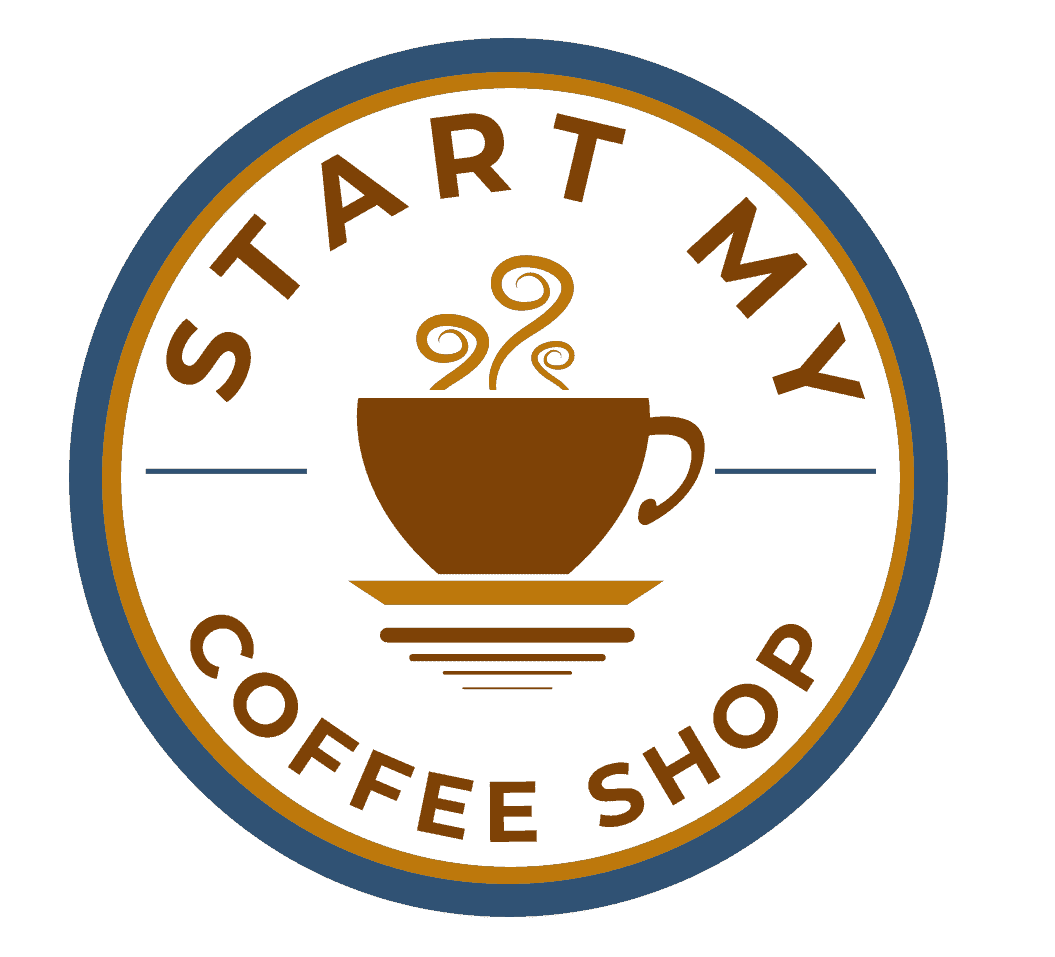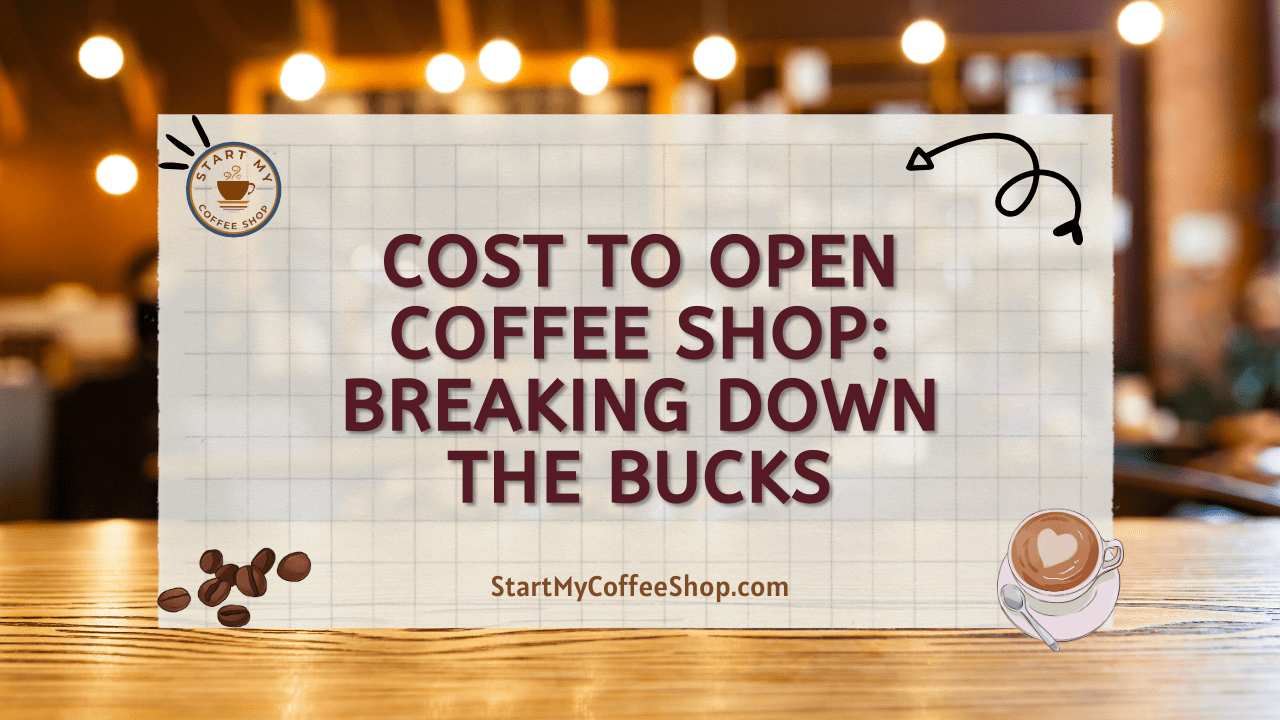Opening a coffee shop can be an exciting venture for coffee enthusiasts and entrepreneurs alike. From creating a cozy ambiance to serving delightful beverages, it’s a dream for many. However, before you embark on this journey, it’s crucial to understand the costs involved.
Opening a coffee shop entails several costs, including location expenses, licensing and permits, equipment and furnishings, renovations, staffing, inventory, marketing, and utilities. Careful budgeting and planning are crucial to ensure an effective and financially viable venture in the competitive coffee industry.
In this article, I will take a deep dive into the expenses you can expect when opening a coffee shop, providing you with a comprehensive guide to help you plan and budget effectively.
Location
When opening a coffee shop, one of the most critical factors to consider is the location. The cost of renting or purchasing a suitable space will depend on various factors, including the city, neighborhood, and size of the premises. In general, popular and high-traffic areas tend to come with higher rental costs, as they offer greater visibility and potential foot traffic. On the other hand, less busy locations may provide more affordable options.
Selecting the right location is a delicate balancing act. While it’s tempting to aim for a bustling area with a high concentration of potential customers, the associated costs might be prohibitive for a new coffee shop. It’s important to conduct thorough market research to identify areas with a good mix of foot traffic and affordability.
Consider the demographics of the area you’re targeting. Are there nearby offices, residential neighborhoods, or educational institutions? Is there a potential customer base that aligns with your coffee shop’s offerings? These factors will play a crucial role in determining the viability of your location.
Additionally, think about the competition in the area. Are there already established coffee shops nearby? If so, carefully analyze their offerings and target market to ensure you can differentiate yourself and attract your customer base. Sometimes, choosing a location slightly away from direct competition can be advantageous.
Don’t forget to consider the physical layout of the space as well. Ensure that it has adequate space for your desired seating arrangements, a functional kitchen area, and proper utilities. Take into account any necessary renovations or modifications that may be required, as these can add to the overall costs.
Read more about: Cost of Opening Coffee Shop: Steaming Hot Ventures
Licensing and Permits
To operate your coffee shop legally, acquiring the necessary licenses and permits is essential. The specific requirements can vary depending on your region and the nature of your business. Typically, you’ll need a business license, which grants you the legal authority to operate. This license ensures that you comply with local regulations and tax obligations.
Additionally, a food service permit is typically required, as you’ll be serving food and beverages to the public. This permit ensures that your coffee shop meets health and safety standards, protecting both your customers and your business reputation. The cost of obtaining a food service permit can vary depending on your location and the size of your establishment.
You’ll also need to budget for a health department inspection. Health inspectors will evaluate your coffee shop’s cleanliness, food handling practices, and overall compliance with health regulations. This inspection ensures that your establishment maintains a safe and hygienic environment for both your staff and customers.
If you plan to serve alcoholic beverages, you may need to obtain a liquor license as well. This license grants you the legal authority to sell and serve alcohol on your premises. The cost of a liquor license can vary significantly depending on your location and the type of license you require.
Equipment and Furnishings

Equipping your coffee shop with the right machines and furniture is crucial for creating a positive customer experience. The essential equipment you’ll need includes an espresso machine, coffee grinder, drip brewers, blenders, refrigeration units, and a point-of-sale (POS) system. These tools form the backbone of your coffee-making process and ensure that you can efficiently serve a variety of beverages to your customers.
In addition to the machinery, you’ll need to furnish your coffee shop with tables, chairs, countertops, shelving, and decor that aligns with your desired aesthetic and atmosphere. The furniture and layout of your space contribute to the comfort and overall ambiance, playing a significant role in attracting and retaining customers.
When it comes to purchasing equipment and furniture, prices can vary widely. It’s crucial to conduct thorough research and compare costs from reputable suppliers. Look for suppliers who specialize in coffee shop equipment and have a good track record. Consider factors such as durability, warranties, and customer reviews when making your decision.
While it may be tempting to cut costs by purchasing lower-quality or second-hand equipment, remember that investing in quality machinery and furniture will pay off in the long run. Reliable and efficient equipment will ensure consistency in the quality of your beverages and reduce the need for frequent repairs or replacements.
Renovation and Interior Design
When transforming a space into a cozy and inviting coffee shop, renovations, and interior design work is often necessary. The extent of the renovations required will depend on the condition of the space you choose to lease or purchase. To create a welcoming atmosphere for your customers, you may need to consider various aspects of the space.
Structural changes may be necessary to optimize the layout and flow of your coffee shop. This could involve removing or adding walls, creating partitioned seating areas, or adjusting the entryway. Electrical and plumbing upgrades may also be required to ensure that your coffee shop has the necessary power supply, lighting, and plumbing fixtures for equipment and facilities.
Flooring plays a vital role in establishing the ambiance of your coffee shop. Consider options such as hardwood, tile, or polished concrete, depending on your desired aesthetic and functionality. Painting the walls in colors that align with your brand identity can significantly enhance the overall look and feel of the space.
Installing fixtures such as lighting, shelves, countertops, and seating areas is crucial for both functionality and aesthetics. Thoughtful placement of these elements can create a comfortable and visually appealing environment for your customers to enjoy.
It’s essential to have a detailed plan and budget in place for the renovation process. Consider both materials and labor costs, as well as any permits or inspections required for the work. Research reputable contractors and suppliers, and obtain multiple quotes to ensure competitive pricing.
Read more about: Cost of Opening a Weed Coffee Shop: Coffee Shop Chronicles
Staffing
In your financial plan, you must account for employee wages, benefits, and payroll taxes. It is important to offer competitive wages to attract and retain talented individuals who can contribute to your coffee shop’s improvement. Additionally, consider providing benefits such as health insurance or retirement plans to create a positive work environment and incentivize employee loyalty.
When budgeting, don’t overlook the initial training costs and ongoing labor expenses. Training your staff properly is crucial to maintain consistency in the quality of your products and services. Ongoing labor expenses include regular wages, paid time off, and any overtime or additional staffing needs during peak hours.
By allocating the necessary funds for hiring, training, and compensating your staff, you can ensure that your coffee shop operates smoothly and delivers a top-notch customer experience. Remember, a motivated and well-trained team will help create a positive reputation for your coffee shop and drive its long-term achievement.
Inventory and Supplies
When it comes to coffee beans, it’s important to select high-quality beans that align with your brand and target market. The cost of coffee beans can vary depending on factors such as the origin, variety, and quality. Consider working directly with coffee bean suppliers or local roasters to ensure freshness and maintain consistency in flavor profiles.
In addition to coffee beans, you’ll need to budget for other essential supplies such as syrups, milk, pastries, and baked goods. These items should be carefully selected to complement your coffee offerings and cater to different customer preferences.
Remember to include the cost of cups, lids, napkins, and other disposable items in your budget. These consumables are essential for serving your beverages and maintaining a clean and hygienic environment for your customers.
Regularly reviewing and adjusting your inventory levels based on demand and seasonality is crucial to avoid wastage and optimize profitability.
Marketing and Branding

Promoting your coffee shop and building a strong brand identity are essential steps in attracting customers and establishing a great business. It is important to allocate a portion of your budget towards marketing activities that can help raise awareness and generate interest in your coffee shop.
Consider investing in creating a professional website that showcases your offerings, provides information about your location and opening hours, and allows customers to engage with your brand. Establishing a presence on social media platforms can also be effective in reaching a wider audience and connecting with potential customers.
In addition to online marketing, offline strategies such as signage, flyers, and local advertising can help raise awareness in your local community. Collaborating with nearby businesses or participating in community events can also contribute to building brand visibility and attracting customers.
Building a loyal customer base takes time and effort, so it is important to invest in marketing strategies that resonate with your target audience. Understand the preferences and interests of your potential customers and tailor your marketing efforts accordingly.
Read more about: Cost of Opening a Small Coffee Shop: The Financial Roadmap
Utilities and Overhead Expenses
Running a coffee shop entails various ongoing operational costs that need to be considered. Utilities such as electricity, water, heating or cooling, internet, and phone services are essential for the day-to-day functioning of your business. These costs, combined with rent, insurance, and maintenance expenses, fall under the category of overhead expenses.
Accurately estimating these operational costs is crucial to ensure the financial viability of your coffee shop in the long run. Carefully analyze past utility bills, research market rates for rent in your area, and obtain insurance quotes to create a realistic budget. Consider any potential fluctuations in utility costs due to seasonal variations or changes in business volume.
In addition to utilities and rent, allocate funds for regular maintenance and repairs to keep your coffee shop in good condition. This includes equipment maintenance, plumbing and electrical repairs, and general upkeep.
By thoroughly accounting for these ongoing operational costs, you can effectively manage your expenses and maintain financial stability. This will help ensure the smooth operation of your coffee shop and contribute to its long-term growth.
Summary
Opening a coffee shop can be a fulfilling and enjoyable endeavor, but it’s essential to consider and plan for the costs involved. By carefully assessing your budget, conducting thorough research, and creating a detailed financial plan, you can set your coffee shop up for progress. Remember, each coffee shop is unique, and costs may vary depending on various factors. By understanding and accounting for these expenses, you’ll be better prepared to navigate the exciting journey of opening your coffee shop.
Frequently Asked Questions
1. How much does it cost to open a coffee shop?
On average, you can expect to invest anywhere from $80,000 to $300,000 or more to start a coffee shop.
2. What are the ongoing expenses for a coffee shop?
Ongoing expenses for a coffee shop include rent or mortgage payments, utilities, employee wages, inventory and supplies, marketing and advertising, insurance, maintenance, and licensing fees.
3. How can I save money on equipment for my coffee shop?
Consider purchasing refurbished or used machines from reputable suppliers. You can also explore leasing options or negotiate with vendors for better pricing.
To learn more on how to start your own coffee shop, check out my startup documents here.
Disclaimer: The information provided by StartMyCoffeeShop.com (“The Site”) is for general informational purposes only. All information on the Site is provided in good faith. However, we make no representation or warranty of any kind, express or implied, regarding the accuracy, adequacy, validity, reliability, availability, or completeness of any information on the Site. Under no circumstance shall we have any liability to you for any loss or damage of any kind incurred as a result of the use of the Site or Reliance on any information provided on the Site. Your use of the Site and reliance on any information on the Site is solely at your own risk. This blog post is for educational purposes only and does not constitute legal advice. Please consult a legal expert to address your specific needs. Terms and Conditions. (https://startmycoffeeshop.com/terms-and-conditions/)

Hi! I’m Shawn Chun
My adventure in coffee began when I first launched my first coffee shop back in the early 2000s. I had to figure out so many things on my own and to make it worse within 2 years of opening two large corporate coffee chains moved in just blocks away from me!
As I saw smaller and even some larger coffee shops in the neighborhood slowly lose customers to these giant coffee chains and slowly close up shop, I knew that I had to start getting creative…or go out of business.
I (like you may be) knew the coffee industry well. I could make the best latte art around and the foam on my caps was the fluffiest you have ever seen. I even had the best state-of-the-art 2 group digital Nuova Simonelli machine money could buy. But I knew that these things alone would not be enough to lure customers away from the name brand established coffee shops.
Eventually, through lots of trial and error as well as perseverance and creativity I did find a way to not only survive but also thrive in the coffee/espresso industry even while those corporate coffee chains stayed put. During those years I learned to adapt and always faced new challenges. It was not always easy, however, in the end, I was the sole survivor independent coffee shop within a 10-mile radius of my location. Just two corporate coffee chains and I were left after that year. All told the corporate coffee chains took down over 15 small independent coffee shops and kiosks and I was the last one standing and thriving.
Along the years I meet others with the same passion for coffee and I quickly learned that it is not only “how good a barista is” that makes a coffee shop successful, but the business side of coffee as well.
Hence why I started this website you are on now. To provide the tools and resources for up and coming coffee shop owners to gain that vital insight and knowledge on how to start a coffee shop successfully.
Stick around, browse through my helpful blog and resources and enjoy your stay! With lots of LATTE LOVE!
Shawn






